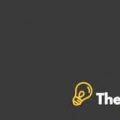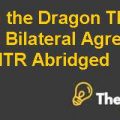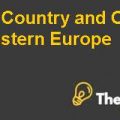
Ariline Industry Analysis
Porter Five Forces - Introduction
Porter five forces analysis is also known as Industry Analysis, which is a structure to examine the level of competition within the industry and business strategy development. It encompasses Industrial Organization (IO) with the view to derive five forces that determine the competitive strength and therefore attractiveness of the market. Attractiveness in this framework refers to the overall profitability of the industry. An “unattractive” industry is the one in which combination of these five forces acts negatively and decreases the profitability. All of these five forces are referred as macro environment. If there a change occurs in any of the forces then it requires a business to restructure its business strategy in order to gain market share and continue to be competitive. However, it is not necessary that every company in the industry will earn profit if there is attractiveness in the industry (Porter, 2008).
Airline Industry
Air travel industry has always been a rising industry. It strengthens economic growth, world trade, international investment and tourism and is fundamental to the globalization that is taking place in many other industries. During the last decade, air travel has grown significantly. Both business and leisure purpose travel grew strongly on a global scale. Every airline has its priorities like some are focusing on the low cost while others are concentrating to provide best quality services to the passengers with high fares.
Governments in developing countries know the benefits of tourism to their national economies and encourage infrastructure and resorts development in order to attract tourists from the developed countries of North America and Western Europe. When there is a rise in the economies of the developing countries, their own citizen’s turnout to be new international tourists of the future. Business travel has also increased as the companies are mostly focusing on international travel as they invest tremendously in the shape of the rise in the supply, production and their customers as well. As a result of speedy growth in global trade, goods, services and investment have also added to the growth in the business travel.
Role of International Airline Travelling Association (IATA)
Role of IATA is very critical and important to the overall airline industry. IATA is an intentional industry of airline trade groups that aims to lead and serve the airline industry efficiently and effectively. It is located in more than 150 regions and covers around 101 offices globally. The major objective of the IATA is to encourage safe, regular and economical air travel to the people on global basis.
Porter Five Forces Analysis
Bargaining Power of Buyer: High
Passengers who are travelling are the buyers of the airline industry; there are several kinds of buyers like economy class passenger, business class passenger, etc. People travel in the world as per their buying power and priorities, now days there are various airlines available to the passengers to approach and they can choose as per their buying power and interest. Bargaining power of the buyer is high because if they can’t afford one airline with high fares then they can opt to another low fare airline. Usually fares are high in the airline industry but some airlines also facilitate the passengers by offering low fares.
Bargaining Power of Supplier: High
Airplane manufactures are the suppliers of the airline industry, the top two airlines manufactures in the world are Boeing and Airbus; both of them belongs to the United States. There is a huge risk factor in this side because standards should be met in order to build an aero-plane. Both of the top suppliers have their worth and brand image globally so they charge as per their desire as a result they can bargain as much as they can, but one thing is sure that they can’t compromise on the quality standards due to their professionalism and worldwide reputation. The introduction of “Eco-Friendly Planes” is also causing a significant change in the bargaining power of suppliers. Usually airline companies cannot switch supplier due to the long term contracts with the suppliers because planes are very expensive capital products and companies normally have long term loan agreements with their suppliers. It is not very simple to make plans for the manufacturers as one plane’s estimated cost is around 200 million dollars that is one of the main reasons that there are extremely few suppliers in the airline industry.
Threat of New Entrants: Low
It is also one of the significant aspects of the five forces. This also has a low threat for the airline industry due to low-switching cost, and there are no proprietary products and services involved in it. Airline industry requires ample amount of capital to survive and it also requires a strong customer base. The firms who are already .............................
This is just a sample partial case solution. Please place the order on the website to order your own originally done case solution.












